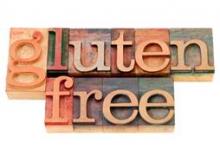BALTIMORE – Navigating the gluten-free world can be very challenging for patients with celiac disease and their families. Clinicians need to help them understand food labeling and other dietary concerns.
Fortunately there are some tips that can simplify finding gluten-free foods, according to one expert at a meeting on pediatric nutrition sponsored by Johns Hopkins University.
"This is the good news. All that you have to teach your patients are six words ... to identify whether a product that is not labeled gluten-free is a gluten-containing item," said Pam Cureton, who is a registered dietician at the University of Maryland Center for Celiac Research in Baltimore.
Parents and patients should check the label for wheat, barley, malt, rye, oats (not specifically-labeled gluten-free), and brewer’s yeast.
"Teach your patients those six words and they are good to go," she said.
Some things – like modified food starch and maltodextrin – can trip parents up though. However, the Food Allergen Labeling and Consumer Protection Act of 2004 requires that if a product contains wheat (or a few other common food allergens), the label has to state this, Ms. Cureton said. So, modified food starch – without the word wheat next to it on a label – is derived from corn. "It is safe for your patients to eat."
She offered this tip for maltodextrin. "I always tell my patients that if it sounds like a food flavoring or food additive – malt flavoring, malt syrup, malt extract – if it sounds like a food, don’t eat it. If it sounds like a chemical – maltodextrin, isomalt, maltase – those are highly processed sugar alcohols, and they’re fine to eat."
In addition, some manufacturers will use statements such as "may contain wheat." This can be tricky. "The ‘may contain’ are allergen advisory statements. It could be something like ‘manufactured in a plant that contains wheat.’ " However, according to the Food Allergen Labeling and Consumer Protection Act, the product label must state "contains wheat," not "may contain wheat." The phrasing "may contain" is a voluntary statement that manufacturers may add to the label, when in doubt. "It’s not a reliable way to determine if this is a good product or not," said Ms. Cureton.
Sometimes products carry label statements such as "the manufacturer tests their products to 5 ppm or no detectable gluten." Other manufacturers may make the exact same product but don’t bother with this and don’t include it on their labels.
"Basically, I ignore these statements ... if it’s a product labeled gluten-free, you just ignore these statements and move on," she said.
"Hopefully, soon, the FDA will come up with a definition for the term gluten-free. There is none at this point. As long as it doesn’t contain wheat, rye, or barley, that’s all that matters." This is expected to be enacted in 2012. "Once that happens, you need to be prepared for the fallout."
While the labeling will be voluntary, for those manufacturers that choose to use the words ‘gluten-free’ on the label, the product can’t contain wheat, rye, or barley. To meet the proposed gluten-free definition, a product must have less than 20 ppm of wheat. But "what does that mean? Is it per serving, per day, per slice?" she asked.
Clinicians should be able to explain this to their patients. So, where does the number come from? Several studies have been done to determine how much wheat is safe for a patient with celiac disease – how much can be ingested before damage begins?
In one randomized control trial from Italy, researchers found that 10 mg gluten per day showed no signs of damage on repeat endoscopy, while with 50 mg per day, the beginning signs of intestinal damage could be seen (Am. J. Clin. Nutr. 2007;85:160-6).
The researchers also looked at how much gluten-free food was eaten in this Italian population per day – about 300 g per day. Given this, they calculated what level of contamination in a gluten-free product would result in less than 10 mg gluten per day if a person ate 300 g of gluten-free food per day – 20 ppm (approximately 6 mg gluten per day). "So in other words, they could eat a lot of gluten-free food without getting near that 10 mg, which is safe."
In other terms, 20 ppm is 20 mg gluten per 100 g gluten-free product. For perspective, a slice of bread has 2,500 mg of gluten (125,000 ppm). "They can have 500 g of gluten-free food per day without going over that 10 mg." This means: 18 slices of gluten-free bread or 18.5 cups of gluten-free rice cereal or 9.5 servings gluten-free pasta.


